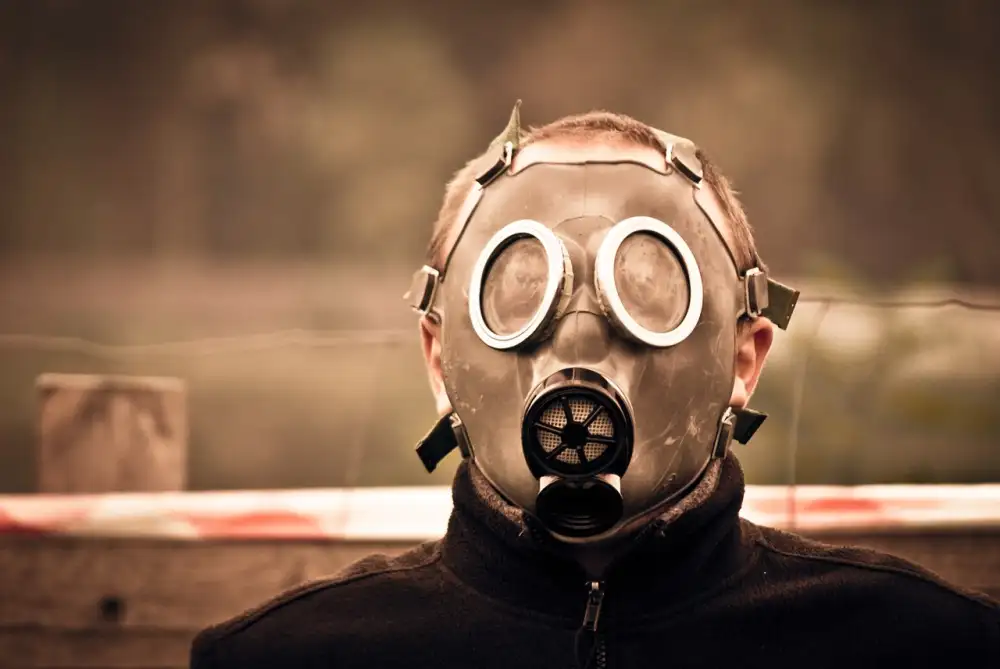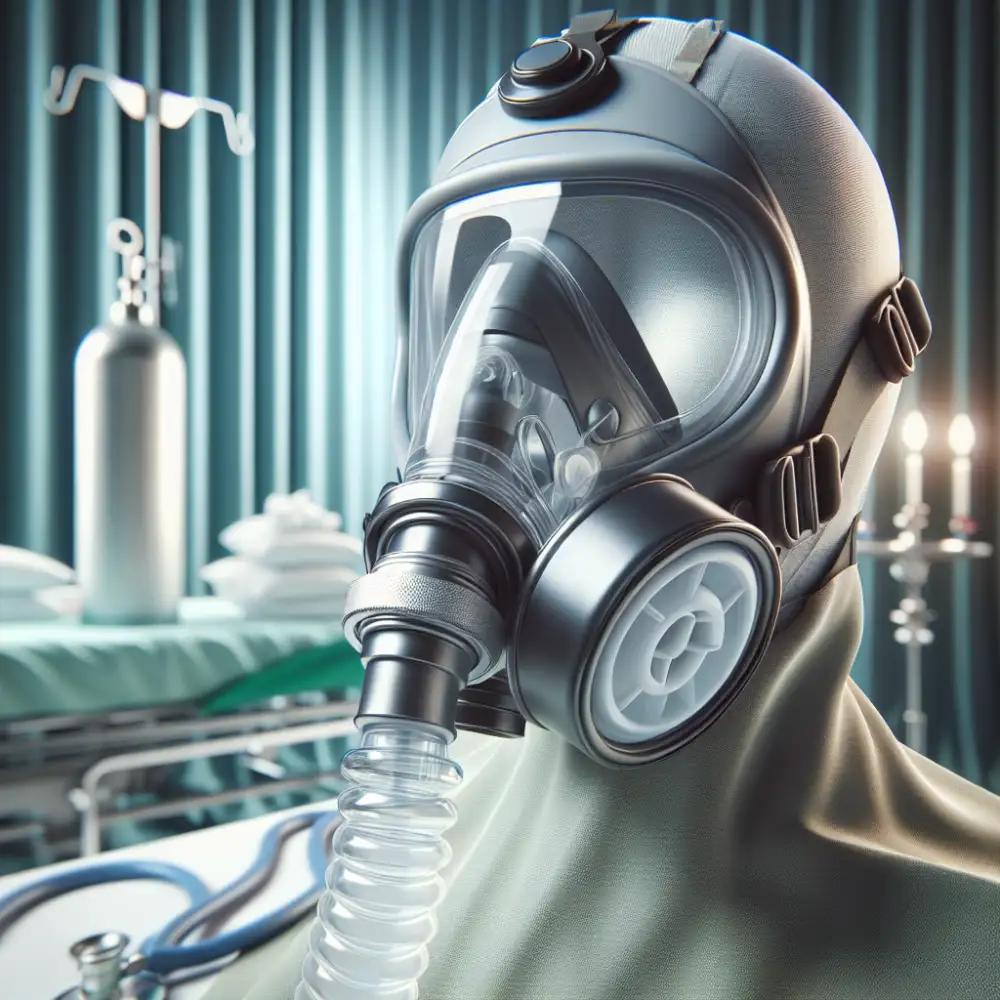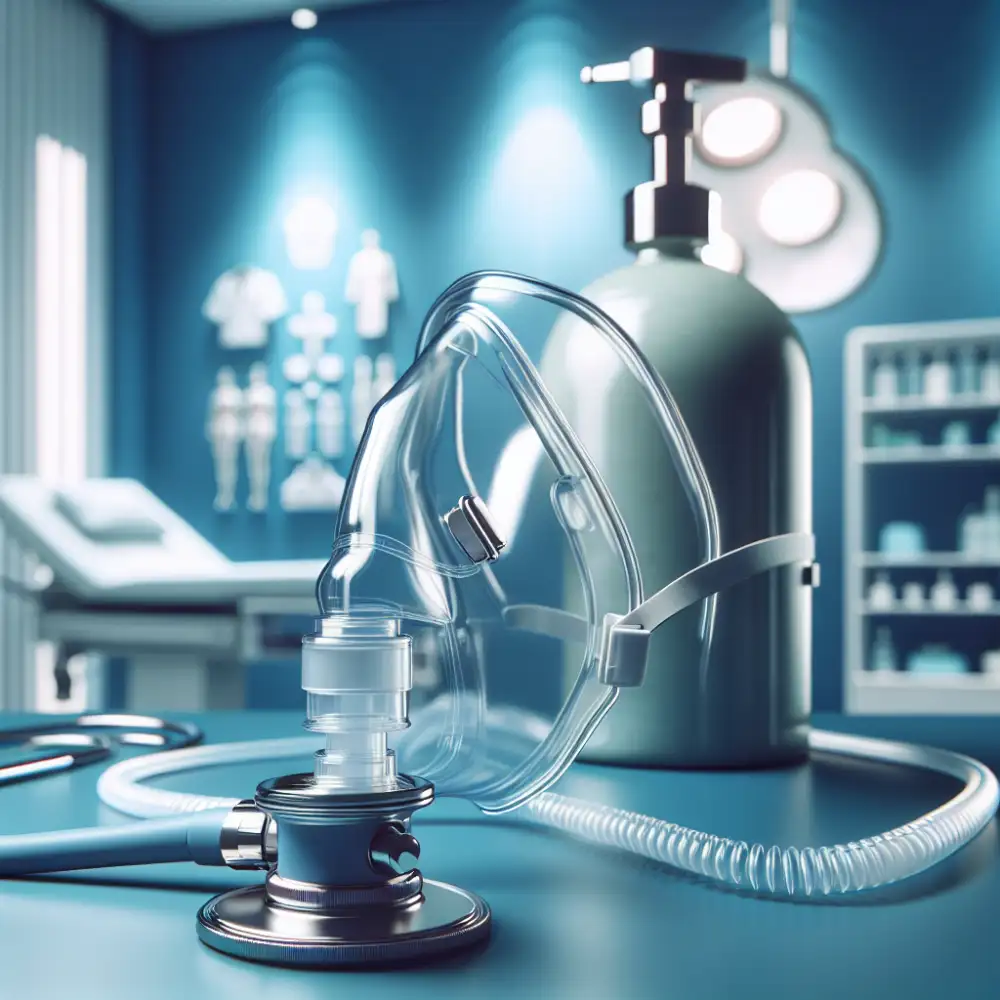Revitalize Your Health with an Oxygen Gas Mask: A Breath of Fresh Air

In recent years, oxygen gas masks have gained popularity as a tool for promoting health and well-being. These masks deliver concentrated oxygen to the wearer, providing a boost of pure oxygen that can have numerous benefits for the body. Whether used in medical settings or for personal wellness, oxygen gas masks offer a convenient and effective way to increase oxygen intake and revitalize one's health.
Purpose and Benefits of Oxygen Gas Masks
Oxygen gas masks are designed to deliver concentrated oxygen to individuals who may have difficulty breathing or require extra oxygen support. The primary purpose of oxygen gas masks is to increase the oxygen levels in the body, which can be beneficial for those with respiratory conditions such as asthma, chronic obstructive pulmonary disease (COPD), pneumonia, and more. By providing a higher concentration of oxygen, these masks help improve blood oxygenation levels, reduce shortness of breath, and enhance overall well-being. Additionally, oxygen therapy through gas masks can aid in faster recovery from illnesses and promote better physical performance during activities like exercise or sports.
Types of Oxygen Gas Masks
1. Nasal Cannula: This type of oxygen mask consists of a small, flexible tube that delivers oxygen directly into the nostrils. It is lightweight and comfortable, making it suitable for patients who need low levels of oxygen.
2. Simple Face Mask: The simple face mask covers the nose and mouth, providing higher levels of oxygen compared to the nasal cannula. It is commonly used in hospitals and clinics for patients requiring moderate oxygen therapy.
3. Venturi Mask: This mask allows for precise control over the amount of oxygen delivered by adjusting the size of the air entrainment ports. It is useful in delivering specific oxygen concentrations to patients with varying needs.
4. Non-Rebreather Mask: The non-rebreather mask delivers high concentrations of oxygen and features a one-way valve to prevent exhaled air from entering the mask. It is often used in emergency situations or for critically ill patients who require maximum oxygen delivery.
5. Partial Rebreather Mask: Similar to the non-rebreather mask, this type allows some exhaled air to mix with fresh oxygen, increasing efficiency while still delivering high concentrations of oxygen.
Each type of oxygen gas mask serves a specific purpose based on the patient's condition and required oxygen levels, highlighting the importance of selecting the appropriate mask for optimal health benefits.
How Oxygen Gas Masks Work
Oxygen gas masks work by delivering concentrated oxygen to the wearer through a mask or nasal cannula. The masks are connected to an oxygen tank or concentrator that regulates the flow of oxygen. When worn, the mask covers the nose and mouth, allowing the individual to inhale higher levels of oxygen than what is present in the surrounding air. This increased oxygen intake helps to improve blood oxygen levels, enhance tissue function, and promote overall well-being. The masks ensure that individuals receive the necessary amount of oxygen required by their bodies, especially in cases where natural breathing may not be sufficient.

Conditions Requiring the Use of Oxygen Gas Masks
Oxygen gas masks are essential for individuals suffering from respiratory conditions such as chronic obstructive pulmonary disease (COPD), asthma, pneumonia, and other lung diseases. These masks provide supplemental oxygen to help improve oxygen levels in the blood, alleviate shortness of breath, and prevent complications associated with low oxygen levels. Additionally, patients undergoing certain medical procedures or recovering from surgery may also require the use of oxygen gas masks to support their respiratory function and aid in their recovery process. It is crucial for individuals with these conditions to consult healthcare professionals for proper assessment and guidance on the use of oxygen gas masks to ensure optimal health outcomes.
| Feature | Oxygen Gas Mask | Simple Cloth Mask |
|---|---|---|
| Purpose | Deliver supplemental oxygen | Filter particulate matter |
| Oxygen Source | Attached oxygen tank or concentrator | Ambient air |
| Fit | Tight seal required | Loose fitting |
Proper Usage and Maintenance of Oxygen Gas Masks
Proper usage and maintenance of oxygen gas masks are crucial for ensuring their effectiveness. When using the mask, it is important to follow the manufacturer's instructions carefully to ensure proper fit and seal. Regularly check the mask for any signs of wear or damage, such as cracks or tears in the material. Clean the mask regularly with mild soap and water to prevent the buildup of bacteria or other contaminants. Store the mask in a clean, dry place when not in use to maintain its integrity. Regularly replace any disposable components according to the manufacturer's recommendations to ensure optimal performance. By following these guidelines, you can maximize the benefits of your oxygen gas mask and promote better health outcomes.
In conclusion, oxygen gas masks play a crucial role in promoting respiratory health and overall well-being. By delivering concentrated oxygen to the body, these masks can help alleviate symptoms of various respiratory conditions and improve oxygen levels in the blood. Whether used in medical settings or for recreational purposes like high-altitude activities, oxygen gas masks provide a safe and effective way to ensure adequate oxygen supply.

It is essential to recognize the significance of oxygen therapy in managing conditions such as asthma, COPD, pneumonia, and other respiratory illnesses. Proper usage and maintenance of oxygen gas masks are vital to ensure optimal benefits and safety. As technology advances, these devices continue to evolve, offering more options for personalized treatment plans.
Overall, incorporating oxygen gas masks into healthcare practices can significantly enhance patient outcomes and quality of life. With their ability to revitalize health through increased oxygen intake, these masks serve as valuable tools in supporting respiratory function and promoting overall wellness.
Published: 06. 05. 2024
Category: Health



